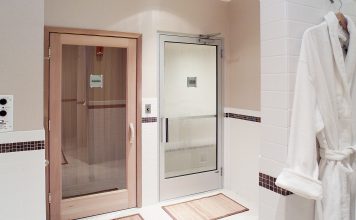Malaysia is blessed with majestic breath-taking mountains, tropical parks and lush scenic landscapes that will excite any adventurous soul. But with hot and humid weather all-year round and a good chance for shower and even a downpour, a versatile hiking sandal always works no matter where you go!

“Hiking sandals are the most versatile. As they are lightweight, packing a pair in your backpack is simply a breeze. It’s best to select a pair of sandals that can handle most outdoor activities from hiking, water activities to regular walking. Choose sandals which have textured insole to give adequate traction and prevent you from slipping on wet surfaces,” said Puan Norita Mohd Noor, General Manager of Prestige Sports Sdn Bhd, the sole distributor for Teva in Malaysia.
Here are top 6 valuable tips to choose the right pair of hiking sandals:
1Where are you heading to?
The right pair of sandals can make a world of difference. Before settling for a pair of the best hiking sandals, do consider the possible locations where you will be hiking in. If you will be hiking in terrains with a lot of water, consider buying water resistant sandals. This will enable them to dry much faster. Moulded sandals are better as they ensure that water does not seep in. If you are going to encounter slippery areas while hiking, it is good that you consider sandals with superb traction. Look for sandals with thick, deep treads that will give you adequate grip and traction on slippery surfaces. If the terrain is rocky and rugged, it is important to consider durable sandals that can withstand the abuses of the hiking trail.
2Give your feet some air
Consider light sandals with breathable uppers for ample ventilation. For soles and upper, take into account synthetic material that dries quickly or sturdy rubber that enhances comfort, protection and durability. The best material for midsoles should be shock resistant and comfortable. To avoid chaffing and blisters, the sandal materials must also be soft against the skin and not rub uncomfortably.
3Treads are important
Look out for the size of the treads on the outsole as it can enhance your traction and balance when navigating a trail. Deeper aggressive patterned treads would be ideal for uphill and downhill terrain; while finer treads are more suitable for relatively flat trails. The treads enable your sandals to grip especially when walking on rocky or slippery tracks.
4Watch those traction
Traction is a crucial factor to consider when choosing your sandals. There are two types of traction to bear in mind – inside traction and outside traction. Losing grip when hiking on slippery rocks can be extremely disastrous. Inside traction is determined by insole. The best sandals have a textured insole to give adequate traction and avoid slipping when walking on wet surfaces. The outsole should be made of grippy rubber with deep lugs to provide adequate traction and balance.
5Don’t forget arch support
Good arch support in hiking sandals can prevent or lessen foot pain as it helps to distribute pressure evenly across the base of the foot. It also helps align the body properly, as well as provide excellent balance and stability when walking.
6Always choose comfort & fit over style!
Comfortable sandals that fit well ensures you have an enjoyable hiking adventure. The best hiking sandals come with adjustable straps. The adjustability creates more room for a pair of socks or any foot changes due to swelling. Having an ill-fitting pair of sandals can ruin your entire hiking trip due to discomfort or even injuries.
Article courtesy of AccentEdge Communications for Teva.
Read also: Teva Spring 2019 GC100 Collection Dedicated for New Generation of Outdoor Enthusiasts









